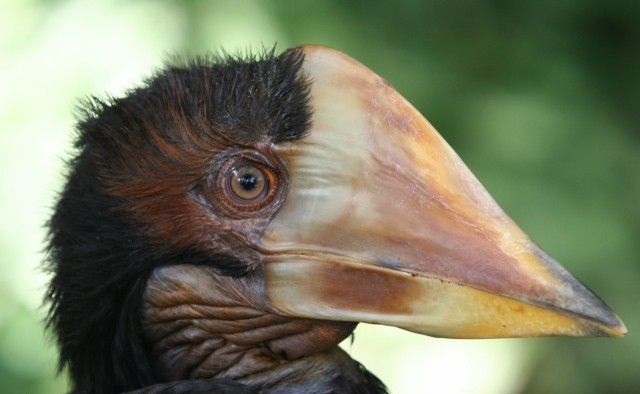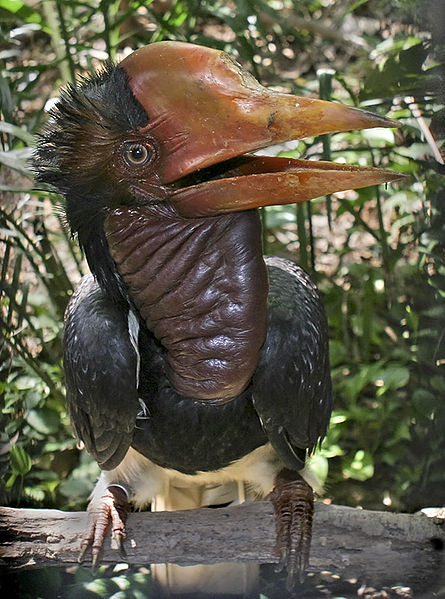Habitat
The Helmeted hornbill is found through many parts of Southeastern Asia. This includes the countries of Myanmar, Thailand, continuing on to Sumatra and Borneo (del Hoyo et al. 2001, Kemp 1995). An organism that shares this habitat is the Asian Elephant(Elephas maximus).
In what sort of Habitat do the Helmeted hornbill live?
The hornbill's prefered habitat is forests with ample rain and evergreen trees. The Buceros vigil can be found at high alititudes( up to 1100m) but are a rare sight in low lying plains (as cited in Kemp 1995). This bird is found in these forests because it's diet is largely composed of fruit from the fig tree, an evergreen tree (as cited in Kinnaird et al. 2003). The Helmeted Hornbill can also be found in forest that have been subject to light logging.
Within these forests these birds are also primarily found in the canopy, or the highest portions of the forest. Also, these birds have been found in forests that have been subject to light logging (Kemp 1995). The individual trees that they choose to live in is largely dependent on their form of reproduction.
What role does the Helmeted hornbill hold in this habitat?
The Helmeted Hornbill has many different roles within its habitat. To start, it is a very integral predator of a habitat. This bird's food ranges from fruits of fig trees to small animals including, squirrels, snakes, and even other hornbill species (del Hoyo et al. 2001).
Given the intense dependence the Bucero vigil, as well as its fellow hornbills, have on the surrounding environment, their taxonomic family, the Bucerotidae, have been used as a subject of studies. These studies examine the condition of their habitats by examining their density in (Thongaree and Gale 2006). In a very basic sense, if an environment is stuggling, it will most obviously be seen in the density of these birds because of their requirement for large areas of healthy forests. Research done has shown that the Helmeted Hornbill, along with the very closely related Rhinocerous Hornbill (Buceros rhinoceros), showed the greatest density in the areas that were studied (Thongaree and Gale 2006).This leads to the conclusion that possibly the Buceros vigil is not necessarily as susceptible as some of the other hornbills.
Continue on to learn about the
Buceros vigil's
Form
and Function
or
Head back to the
homepage


